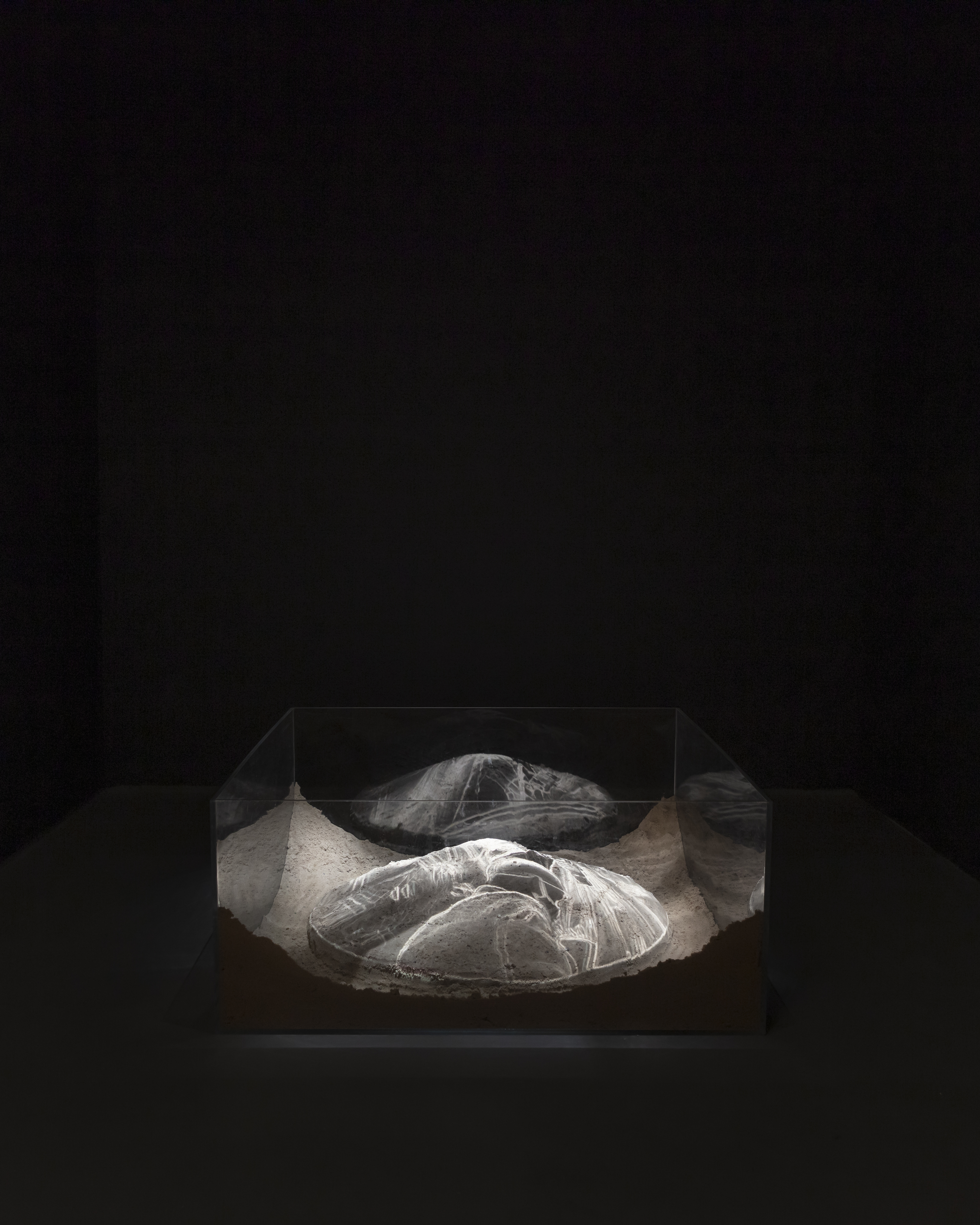The photo-installation Ankhon Dekhi (2022) deals with making the invisible visible, turning the
invisible into material evidence. While visiting his relatives in India, Dhunsi was offered to see the
world’s longest factory building. When his father moved from his home country, he brought with him
three carpets made by his mother, symbolically maintaining a cultural connection and an idea of home
for his entire life. A textile factory located in the same village where he grew up complicates the
encapsulation of the stories. The electricity can go down suddenly on the streets of these towns, yet
machines continue to fix vehicles, and the sound is all that remains. As infrastructure always
conditions our bodies, Ankhon Dekhi also speaks about body liquids one cannot discharge, the reality
and representation of the factory and its work (how it is presented to the outside world and the public,
as well as the reality of its interior): prolonged exposure to light and different forms of cleansing,
dripping, moving, marking, and the worker’s bodies being affected by light, water, and other pressure
until obsolescence, in the same way a textile is exposed to. Ankhon Dekhi consists of images arising,
composing, and decomposing themselves into a liquid substance that is always on the verge of
renewal or disappearance.

